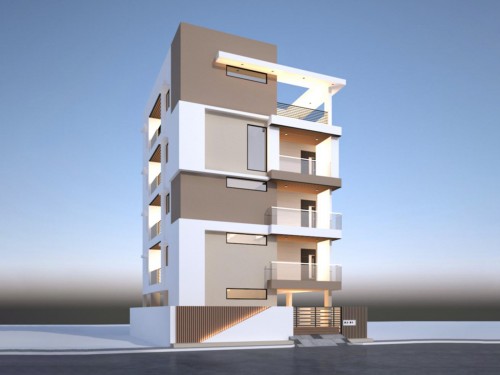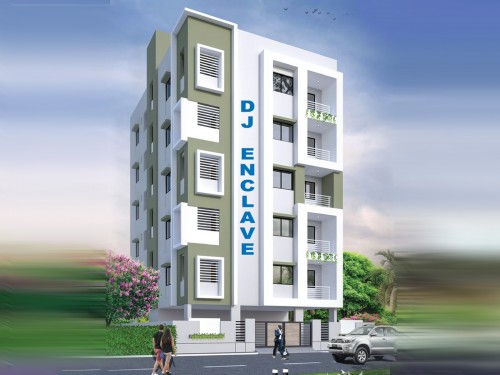How to Get Pre-Approved for a Home Loan in India
What is Home Loan Pre-Approval?
Pre-approval is an "in-principle" approval from a lender, stating the maximum loan amount you are eligible for based on your financial standing. Unlike pre-qualification (a quick, informal estimate), pre-approval involves a thorough verification of your financial documents and a hard credit check. This results in a conditional commitment from the bank, usually valid for 3 to 6 months.
Benefits of Getting Pre-Approved:
· Clarity on Your Budget: You'll know exactly how much you can borrow, helping you narrow down property searches to those within your affordable range.
· Stronger Negotiating Power: Sellers and real estate agents view pre-approved buyers as serious and financially prepared, giving you an edge in negotiations.
· Faster Loan Disbursal: Since most of the financial verification is done upfront, the final loan approval and disbursal process becomes significantly quicker once you finalize a property.
· Potential Interest Rate Lock: Some lenders offer the option to lock in an interest rate during pre-approval, protecting you from potential rate hikes.
· Early Identification of Issues: The process can reveal any discrepancies in your credit history or finances early on, allowing you to address them before making an offer.
The Pre-Approval Process and Required Documents:
To get pre-approved, you'll need to submit several documents and undergo a financial assessment.
Common Documents Required:
· Identity Proof Valid ID proofs such as PAN Card (mandatory for loans above ₹10 lakhs), Passport, Aadhaar Card, Voter ID, or Driving License.
· Address Proof: Aadhaar Card, Voter ID, Driving License, Utility Bills, Registered Rent Agreement.
· Income Proof:
o Salaried Individuals: Last 3-6 months' salary slips, Form 16 (for the last 2 years), bank statements (last 6 months), IT Returns (last 2-3 years).
o Self-Employed Individuals: Income Tax Returns (ITR) with Computation of Income (last 2-3 years), Balance Sheet and Profit & Loss Account (with CA seal and sign), business proof (e.g., registration certificate), bank statements (last 12 months for business accounts).
· Other Documents: Employment certificate (for salaried), details of existing loans (if any), passport-size photographs.
The Process:
1. Gather Documents: Collect all necessary financial and personal documents.
2. Check Your Credit Score: A good credit score (typically 725 or higher) is crucial for a favorable pre-approval and better interest rates.
3. Approach a Lender: You can apply online or visit a bank branch.
4. Financial Assessment: The lender will thoroughly review your income, existing debts, credit history, and repayment capacity.
5. Pre-Approval Letter: If approved, you'll receive a pre-approval letter stating the maximum loan amount you're eligible for, usually valid for 3-6 months.
How Much Home Loan Can I Get on My Salary?
Your home loan eligibility is primarily determined by your repayment capacity, which is calculated based on your net monthly income, existing financial obligations (other EMIs), age, and credit score.
Lenders typically allow your Home Loan EMI to be around 40-50% of your net monthly income. Factors considered include:
· Net Monthly Income: Your take-home salary after deductions.
· Fixed Monthly Obligations (FOIR): This includes EMIs for existing loans (car loans, personal loans, credit card outstanding), which reduce your disposable income.
· Age and Remaining Working Years: A younger applicant with more working years typically qualifies for a longer tenure and thus a higher loan amount due to lower EMIs.
· Credit Score: A higher CIBIL score indicates better creditworthiness and can lead to higher eligibility and better terms.
· Loan-to-Value (LTV) Ratio: The RBI sets LTV limits, meaning banks finance a certain percentage of the property's value. For properties up to Rs. 30 lakhs, it can be up to 90%; between Rs. 30 lakhs and Rs. 75 lakhs, up to 80%; and above Rs. 75 lakhs, up to 75%.
Example: If your net monthly income is ₹60,000 and you have no other EMIs, a lender might consider you eligible for an EMI of up to ₹30,000 (50% of income). Using online EMI calculators, you can then estimate the corresponding loan amount based on prevailing interest rates and tenure.
Best Home Loan Interest Rates in India
Home loan interest rates in India are constantly fluctuating, several public sector banks are offering competitive rates.
Key things to know about interest rates:
· Floating vs. Fixed:
o Floating Interest Rate: Changes with market conditions (often linked to the RBI's repo rate). Offers the potential for lower EMIs if rates fall but carries the risk of higher EMIs if rates rise.
· Fixed Interest Rate: Remains constant throughout the loan tenure, providing stability and predictable EMIs. This lead to paying more interest overall if floating rates drop substantially
· Factors Affecting Your Rate: Your credit score, income stability, employment type (salaried vs. self-employed), and even the property's location can influence the final interest rate offered.
· Current Trends: Public sector banks like Union Bank of India, Bank of Maharashtra, and Central Bank of India are currently offering some of the lowest rates, starting from around 7.35% p.a. onwards.
Always inquire about all applicable charges, including processing fees, prepayment charges, and pre-closure charges, when comparing interest rates.
How to Choose the Right Home Loan Tenure:
· Shorter Tenure:
o Pros: Significantly lower total interest paid, faster debt repayment, quicker homeownership.
o Cons: Higher monthly EMIs, which might strain your budget.
· Longer Tenure:
o Pros: Lower monthly EMIs, making repayments more manageable and improving cash flow for other investments or expenses.
o Cons: Higher total interest paid over the life of the loan.
Factors to Consider:
· Your Current and Future Income: If you anticipate a stable or increasing income, a shorter tenure might be feasible. If your income is uncertain or you have other significant financial goals, a longer tenure provides more flexibility.
· Financial Goals: Do you want to be debt-free quickly, or do you prioritize lower monthly outgo for other investments?
· Risk Tolerance: Are you comfortable with higher EMIs to save on interest, or do you prefer the comfort of lower, predictable payments?
· Prepayment Options: Check if the lender allows partial prepayments or foreclosure without hefty penalties, as this can help you shorten the tenure and save on interest even if you start with a longer one.
· Tax Benefits: While tax benefits are available on home loan interest and principal repayment, a longer tenure often means you pay more interest in the initial years, potentially maximizing tax deductions.
Conclusion: Use online EMI calculators to simulate different tenures and their impact on your monthly payments and total interest outgo. This will help you find a balance that aligns with your financial comfort and goals. By understanding these key aspects of home loan pre-approval, you'll be well-equipped to navigate the home-buying journey in India with confidence.
To know more details about the loan assistance visit our website www.honeyygroup.com and you can also contact us at 7610666999 for more details.






